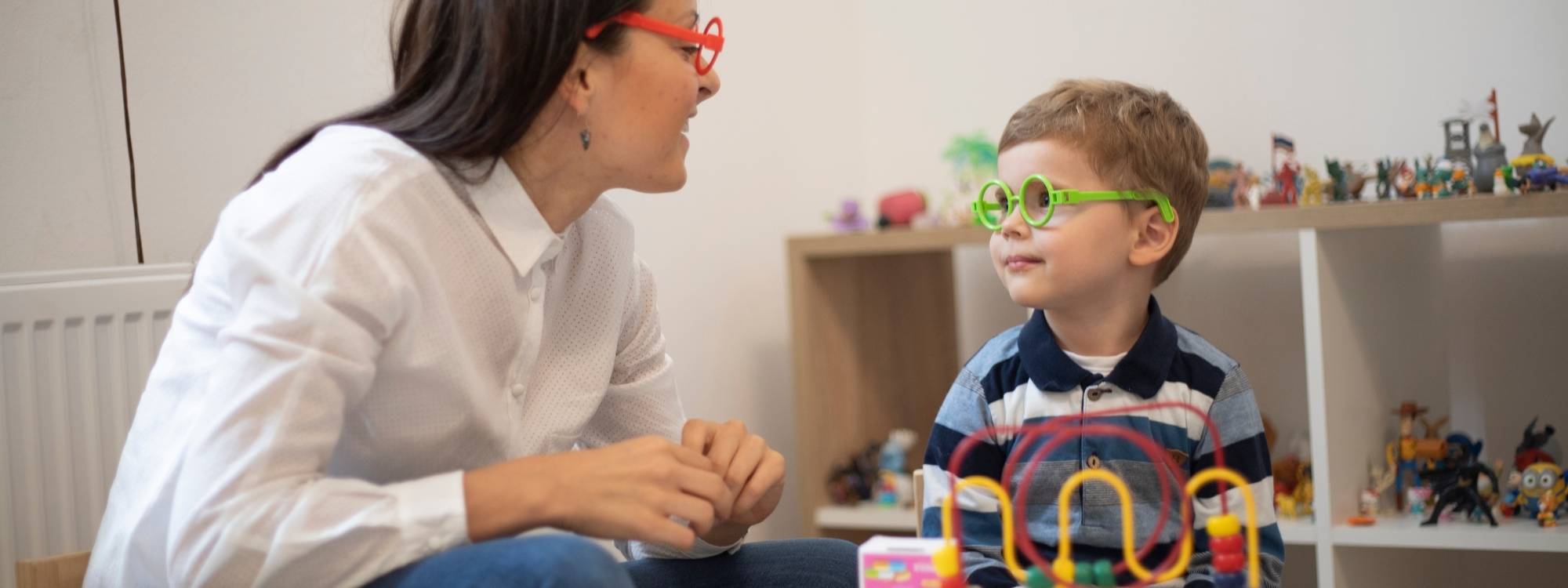Sensory Diet Activities for Autism: Improve Self-Regulation
A sensory diet is a personalized plan that uses structured sensory diet activities targeting the child’s sensory needs for autism and other sensory processing challenges. These activities, designed by an occupational therapist, provide the right kind of sensory input to help children stay calm, focused, and better regulated throughout the day.
Children with autism or sensory processing disorder (SPD) often struggle to process everyday sensory information, which can lead to sensory processing issues such as overstimulation, meltdowns, or difficulty paying attention. A sensory diet helps by offering activities that target a child’s unique sensory needs, whether the goal is to calm, alert, or organize their nervous system.
When tailored effectively and built into daily routines, sensory diets support improved self-regulation, body awareness, and participation in daily tasks at home, school, and in the community, empowering children to thrive in different environments.
Understanding Sensory Systems
The human body has several sensory systems that work together to help children process information and respond appropriately to their environment. For children with autism, differences in these systems can affect behavior, focus, and comfort levels.
The most relevant sensory systems include:
| Sensory System | Function | Example of Sensory Input |
|---|---|---|
| Tactile | Touch, texture, pressure | Play-dough, shaving cream, weighted blanket |
| Vestibular | Balance, movement, inner ear | Swinging, spinning, hanging upside down |
| Proprioceptive | Body position, joint/muscle input | Jumping jacks, push-ups, and carrying heavy objects |
| Auditory | Sound processing | Listening to music, playing a musical instrument |
| Visual | Light, visual stimulation | Flashcards, matching games, and dim lighting |
| Olfactory | Smell input | Essential oils, scented play |
| Gustatory | Taste and oral input | Crunchy or chewy foods, thick liquids through a straw |
Understanding how each sensory system works allows therapists and parents to create activities that target the child’s needs, whether to reduce sensory overload or to provide stimulating input.
Creating a Sensory Diet
Creating an effective sensory diet starts with identifying a child’s specific sensory challenges. An occupational therapist usually conducts an assessment, which may include observing daily routines, speaking with parents, and evaluating responses to different sensory inputs.
A personalized sensory diet typically involves:
- Assessment of needs: Identifying which sensory systems are over- or under-responsive.
- Activity selection: Choosing activities that provide balancing input, such as calming for over-arousal or stimulating for under-arousal.
- Integration into routines: Incorporating activities throughout the day, including school and home.
- Monitoring and adjusting: Tracking how the child responds and updating the plan as needs change.
Examples of calming sensory activities include playing with play-dough for tactile input, doing jumping jacks for proprioceptive input, or exploring sensory bins for both tactile and visual stimulation.
Tactile Sensory Activities
Tactile input, anything involving touch and texture, can greatly influence a child’s self-regulation. Some children with autism may seek constant tactile input, while others may avoid it due to sensitivity. Activities that provide structured tactile exposure help children feel more comfortable and reduce the likelihood of sensory overload.
Examples of tactile sense sensory activities include:
- Playing with play-dough or clay for hand strengthening and texture exploration.
- Exploring sensory bins filled with rice, beans, or sand.
- Using shaving cream or finger paint to encourage messy play.
- Try different textures of food, such as crunchy or chewy snacks.
- Using tactile balls or fidgets to stay engaged during quiet tasks.
These activities help children develop body awareness, improve regulation, and build tolerance for new textures, which can make everyday tasks such as dressing or eating easier.
Vestibular and Proprioceptive Input
The vestibular sense, located in the inner ear, regulates balance and movement. The proprioceptive system, involving joints and muscles, helps with body awareness and coordination. Together, these systems are critical for posture, attention, and calm behavior.
Children with autism may struggle with these systems, leading to challenges in sitting still, following instructions, or managing transitions. Engaging in vestibular and proprioceptive activities provides structured movement that helps regulate the nervous system.
Examples include:
- Swinging or spinning for vestibular input.
- Jumping on a trampoline for combined vestibular and proprioceptive input.
- Obstacle courses that involve crawling, climbing, or balancing.
- Push-ups or wall pushes for heavy work.
- Carrying or lifting heavy objects (e.g., books, therapy balls).
These activities can be calming or energizing, depending on intensity, making them highly adaptable for self-regulation.
Auditory Input and Sensory Activities
The auditory system plays a vital role in how children regulate emotions and focus. For some, loud or unpredictable sounds may cause distress, while others may crave auditory stimulation. Sensory diet activities involving sound can help children learn to process auditory information more effectively.
Examples of auditory sensory activities include:
- Listening to calming music or nature sounds can help reduce stress.
- Playing musical instruments, such as drums or keyboards, to provide rhythmic regulation.
- Singing or chanting to encourage vocal participation.
- Auditory integration therapy or guided sound baths, under professional guidance.
By tailoring sound-based activities, caregivers can either calm an anxious child or provide alerting input for a child who needs more stimulation.
Exercise-Based Sensory Activities
Physical activity is one of the most effective ways to provide multi-sensory input, and children benefit greatly from engaging in these activities. Exercise-based sensory activities enhance body awareness, coordination, and balance while also supporting emotional regulation.
These activities are versatile and can be adapted to a child’s age and abilities:
- Yoga and tai chi for calming and body control.
- Running or dancing for alertness and coordination.
- Jumping jacks and push-ups for proprioceptive input.
- Sensory-based fitness classes designed for children with autism.
Regular exercise supports sensory integration while promoting physical health, making it a key component of most sensory diets to help the child thrive.
Sensory Bins and Diet Activities
Sensory bins are a practical, low-cost tool for parents and therapists to deliver tactile, visual, and fine motor input. They can be customized with different materials depending on a child’s preferences or goals.
Examples of sensory bin activities include:
- Rice or bean bins with hidden small toys for children to find.
- Sand bins for digging, pouring, or tracing letters.
- Water bins with cups, sponges, and floating toys.
- Seasonal bins, such as leaves in autumn or snow in winter, to match real-world experiences.
Sensory bins help children improve fine motor skills, explore textures safely, and remain engaged in a structured way that supports sensory regulation, addressing some of the trickiest aspects of sensory challenges.
Implementing Sensory Diet Activities
Implementing sensory diet activities effectively requires consistency and collaboration between caregivers, educators, and occupational therapists. The goal is to create a supportive environment where activities are naturally embedded in a child’s daily routine.
Steps for implementation include:
- Create a sensory diet schedule: Add sensory breaks into a child’s daily tasks.
- Use tools and visuals: Employ timers, picture charts, or written checklists to guide transitions.
- Incorporate activities into natural routines: Example jumping jacks before homework, or a sensory bin after school.
- Monitor responses: Adjust based on whether the activity calms, alerts, or overstimulates the child.
- Collaborate with professionals: Regular check-ins with an occupational therapist ensure the plan remains effective.
This proactive approach ensures the sensory diet meets evolving needs as children grow and encounter new environments.
Conclusion
Sensory diet activities for autism provide structured and helpful strategies that help children regulate their emotions, improve focus, and participate more successfully in daily life. With guidance from an occupational therapist, parents and caregivers can tailor these activities to meet a child’s specific sensory needs and integrate them into everyday routines. By doing so, children gain the skills and confidence needed to thrive at home, in school, and in the community.
Does your child struggle with sensory overload or regulation challenges? At Champions ABA, we create personalized ABA therapy programs that include sensory strategies to help children with autism stay calm, focused, and engaged. Our team works with families to build routines that improve daily functioning and long-term success. Call (877) 242-1744 or visit our website today to get the support your child needs.
FAQs
What is a sensory diet for autism?
A sensory diet for autism is a personalized plan of activities designed to provide the right type of sensory input for a child. It supports self-regulation, focus, and participation in daily routines. Occupational therapists typically create these plans to match each child’s unique sensory profile.
What is food sensory play for autism?
Food sensory play uses safe, edible items to help children explore textures, smells, and tastes in a structured way. Examples include sorting dry beans, finger painting with pudding, or drinking thick liquids through a straw. These activities can reduce food aversions and improve mealtime comfort.
What are sensory activities for autism?
Sensory activities for autism are structured tasks that provide calming or stimulating input depending on a child’s needs. Examples include swinging for vestibular input, playing with sensory bins for tactile exploration, or listening to calming music for auditory regulation.
How to implement a sensory diet?
To implement a sensory diet, parents should work with an occupational therapist to identify a child’s needs. Activities are then incorporated into routines, such as during school transitions or before challenging tasks. Monitoring a child’s responses ensures the plan stays effective and enjoyable.



